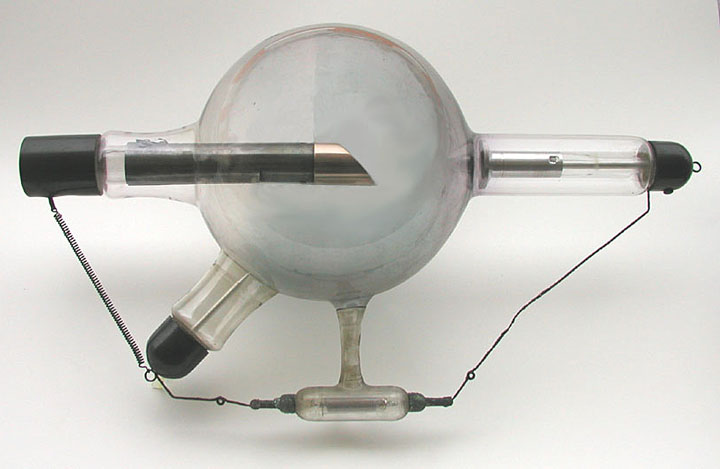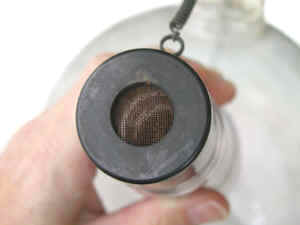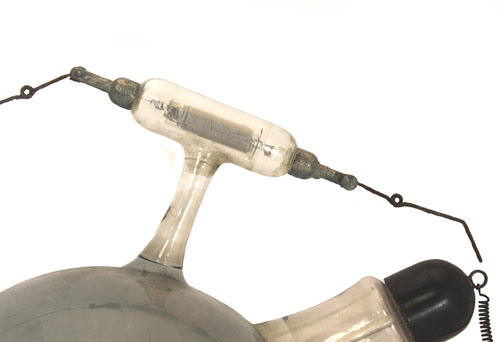Air-Cooled X-Ray Tube (1915-1925)

This is a massive bi-anode X-ray tube, the largest in the ORAU collection.
The aluminum cathode, a little hard to make out, is located at the point where the glass arm enclosing it is attached to the right side of the spherical bulb (as seen in the photo).

The anode is the pointed aluminum rod inside the glass arm attached to the lower left portion of the bulb.
The anticathode, on the long axis of the tube, enters the glass bulb from the left. The target (probably tungsten) is embedded in the copper block at the free end of the anticathode, more or less in the center of the bulb. The black metal tube connected to the back of the copper block helps cool the target by radiating heat.
And now, the information you have been waiting for, how this tube’s air cooling system works. The anticathode is supported by a hollow glass tube the screen-covered open end of which is shown to the right. This design permitted a passive circulation of air that would cool the target during prolonged periods of heavy use. A forced circulation of air would be more effective, but this particular tube was not designed to accommodate it.

Another thing about this tube worth noting: the regulator (photo to left) has two electrical contacts. The wire lever attached to the negative contact of the regulator is used to create a spark gap with the electrical terminal for the cathode, while the lever attached to the regulator’s positive terminal is used to create a spark gap with the anode.
How this was meant to work is nicely explained in the following quote (Knox, 1919):
The regulator (regenerative device) "consists of a little condenser which is made in the form of a cylindrical glass tube covered with an imperfect conductor of electricity. By special treatment this conductor is made to absorb a large quantity of gas. It is then covered with a second glass tube."... When the tube has become too hard, put the wire b of the regenerating arrangement in contact with metal cap d of the tube. The other wire a has to be so far from the metal cap c that a shunt-spark passes.... The current produces some gas from the substance of the regenerating arrangement, and after a few minutes the tube will again fluoresce regularly. The regeneration, however, is only completed when the shunt-sparks have ceased to pass. After regeneration turn back both wires."

There are no visible markings on the tube at all, nothing that could help identify the manufacturer. Originally, I identified this as a Machlett & Son’s tube, but the basis for that identification is no longer apparent. Although my brain was working better then (about ten years ago), I am now inclined to think that the tube is of European origin. It has a superficial resemblance to the Gundelach tube in the drawing above, but every Gundelach tube I have seen had the company logo on it.
Size: Approximately 20" long with 8" bulb diameter
Reference
Knox, R. Radiography and Radiotherapeutics. Part I. 1919.
